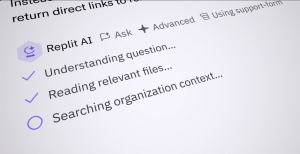These are the top 5 enterprise questions on containers and Kubernetes
Despite having been around for over a decade, containers have significantly grown in popularity and adoption over the past few years. In fact, by 2025, more than 85% of global organizations will be running containerized applications in production, which is a significant increase from fewer than 35% in 2019.
The dramatic rise of containers and Kubernetes, which enable applications to be run unchanged in multiple computer environments, can be attributed to changes in software architecture and development patterns, growing adoption of DevOps and the fact that both are open-source projects supported by a wide ecosystem of participants. Kubernetes, specifically, is emerging as a prominent platform for building cloud-native apps and modernizing legacy workloads.
In order to benefit from and make more sound decisions about these technologies, Gartner collected the most common questions about them from clients.
What are some of the key benefits and challenges that we should be aware of for containers and Kubernetes?
Containers and Kubernetes can bring several benefits to an organization. Some of the core benefits include agile software development and deployment, environmental consistency, immutability and resource efficiency, and open- source innovation. To expand on the environmental consistency benefit, for instance, through tight application component packaging, containers enable platform consistency across development, testing, staging and production clusters. This is an important driver of developer productivity and service resiliency. Likewise, Kubernetes – the now de facto standard for orchestrating containers – offers a high degree of scalability and flexibility for CTOs for containerized applications due to its architecture, ubiquity and broad industry support.
Of course, these benefits must be balanced with the following technology and organizational challenges they bring: platform complexity, security, need for robust automation and governance, and cultural and skills challenges. While there is nothing inherent in the container technology that makes it unsecure, deploying it at scale requires a mature DevSecOps process and security strategy different from protecting monolithic apps running in virtual machines (VMs). Successful container deployments also require extensive curation of technology components, consistent operations, and upgrade of existing tools and processes to ensure automation and governance.
What is the current state of market adoption of containers and Kubernetes? Are there any common use cases?
According to a poll at last year’s Gartner IT Infrastructure, Operations and Cloud Strategies Conference, close to two-thirds of enterprises have deployed containers within their environment, while production deployments are seen in close to one-third of enterprises. That said, despite the growing adoption of containers across enterprises, the ratio of containerized applications is not high yet: Gartner estimates that less than 5% of enterprise applications are containerized today.
The three most common use cases are microservices, legacy app migration and application portability. Containers and Kubernetes enable a strong foundation architecture for microservices due to their ability to orchestrate these modular services, enable scaling and self-healing of the services, and creating a layer of service isolation. The runtime parity that containers enable, and the ubiquitous availability of Kubernetes, enable developers to build apps that can run in a consistent way across hybrid or multicloud environments.
Can commercial off-the-shelf applications be deployed in containers?
Today, most container images are based on open-source software, while support from proprietary independent software providers (ISVs) is nascent. Though the degree of container support varies greatly among ISVs, the container support from ISVs is expected to increase. Platform vendors are investing in marketplaces to enable better access and simplify deployment of containerized apps.
How do I measure the ROI on container and Kubernetes investments?
Ensuring ROI by building a thorough business case is important to validate that the investment in containers and Kubernetes is not purely a matter of it being a shiny, new technology. Organizations need to take a realistic view of the costs incurred and potential benefits, which the below figure illustrates:
Key metrics to include in the ROI are developer productivity, frequency of software releases, operational efficiency and IT operations productivity.
How and with what roles can we successfully deploy Kubernetes?
Customers deploy Kubernetes platforms either using upstream open-source or commercial software distribution or via cloud managed services. Cloud services offer operational simplicity and rapid time to market while software distributions offer better multicloud support and manageability. Upstream open source offers customizability but is complex to operate.
Success with containers and Kubernetes requires a variety of core and auxiliary roles, depending on the use cases and maturity of the organization. Having requisite skills across platform engineering and operations and security engineering is critical. For software development use cases, build and release engineering and reliability engineering are vital roles that need training and/or role creation.
Arun Chandrasekaran is a distinguished research vice president at Gartner, focusing on providing strategic advice to CTOs and CIOs on how to spur technology innovation within enterprise IT. He wrote this article for SiliconANGLE. He and other Gartner experts will present at the Gartner IT Infrastructure, Operations and Cloud Strategies Conference taking place virtually Dec. 7-10 in the Americas and EMEA.
Photo: Maxpixel
A message from John Furrier, co-founder of SiliconANGLE:
Your vote of support is important to us and it helps us keep the content FREE.
One click below supports our mission to provide free, deep, and relevant content.
Join our community on YouTube
Join the community that includes more than 15,000 #CubeAlumni experts, including Amazon.com CEO Andy Jassy, Dell Technologies founder and CEO Michael Dell, Intel CEO Pat Gelsinger, and many more luminaries and experts.
THANK YOU










